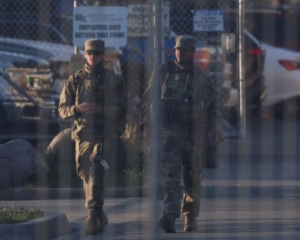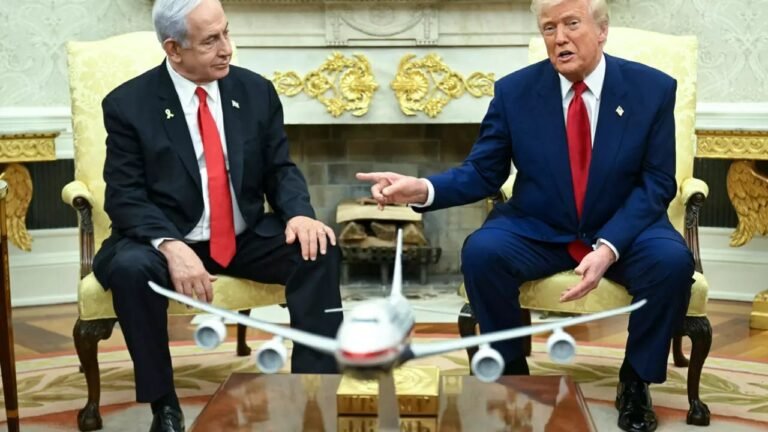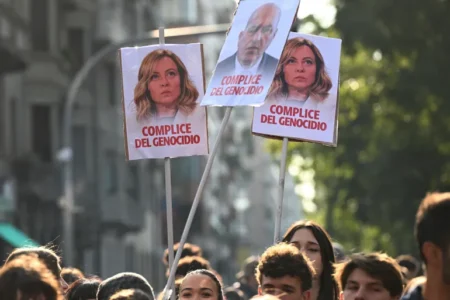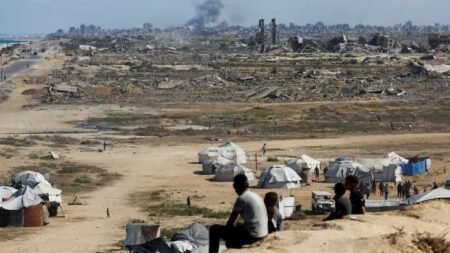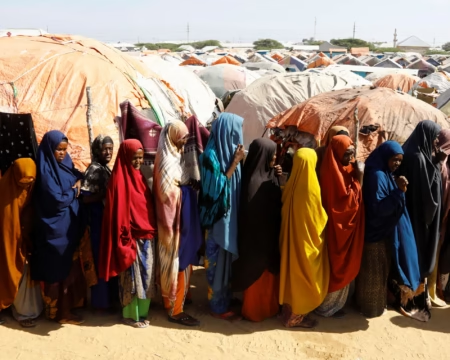The city of Qom in Iran is in mourning. Thousands of people gathered to pay final respects to over 600 people who died during Israeli strikes. These deaths occurred during a 12-day war between Iran and Israel. Now, after hours of back-and-forth attacks at the start of the ceasefire, the situation has become calm.
U.S. President Donald Trump addressed reporters in Washington, D.C., and expressed hope for lasting peace in the region. He called the ceasefire a path to stability and thanked Israel for not launching further attacks. Trump said, “This will lead to long-term peace. Iran will not be able to develop nuclear weapons, and I’m grateful for that.”
He praised the people of Iran, calling them “a great nation” and “good at business.” When asked if he supported regime change in Iran, Trump was firm. “I do not support regime change. I want to see peace as soon as possible,” he said. “Regime change leads to chaos. We don’t want chaos. They should focus on rebuilding their country.”
Iran’s response came from President Masoud Pezeshkian, who spoke to the nation on Tuesday. He said Iran had given a “historic reply” to Israel’s actions. Pezeshkian praised Iran’s military, calling them defenders of national pride.
Meanwhile, Israeli Prime Minister Benjamin Netanyahu also spoke out. He claimed that Israel had achieved a major victory through its 12-day military action, which was named “Operation Rising Line.” Netanyahu stated, “This is a historic win. Future generations will remember it. We have ended threats to our existence.”
He said that Israel destroyed key targets in Iran, including nuclear facilities and around 20,000 ballistic missiles. According to Netanyahu, not acting would have meant serious danger for Israel. “If we didn’t destroy those, Israel itself could have been wiped out,” he said.
However, international observers have not confirmed these claims. No concrete evidence has been shown that proves the destruction of nuclear sites or missile stockpiles in Iran. Critics argue that without proof, such declarations could raise tensions again.
Despite this, both sides are currently observing the ceasefire. No new large-scale attacks have occurred in recent hours. This has raised hope for peace among citizens in both countries. People in Iran continue to mourn the loss of loved ones. Streets in Qom are filled with black banners and crying families.
The war began on June 13. It quickly escalated, with both sides using heavy weapons. Civilian areas were hit, and international groups raised concerns about human rights violations. The 12 days saw thousands injured and major damage to homes and infrastructure.
The ceasefire came after pressure from global powers. Several countries urged both sides to stop fighting and open dialogue. The U.S. played a major role in bringing the parties to agree on a temporary halt.
Still, experts warn that this calm could be short-lived. Tensions remain high. Iran has vowed to protect its sovereignty, while Israel has said it will act again if threatened.
As of now, no talks are planned between the two countries. Diplomatic channels remain limited. But international groups hope this pause can be the start of deeper peace efforts.
The Iran Israel ceasefire conflict shows how fragile peace can be. Both sides claim victory, but the loss of life and destruction are clear to see. What remains uncertain is whether this ceasefire will hold or if more violence will return.
The world watches as Iran and Israel move forward. Leaders on both sides face pressure at home and abroad. Families of victims call for justice, while many others simply hope that the bloodshed will not return.



